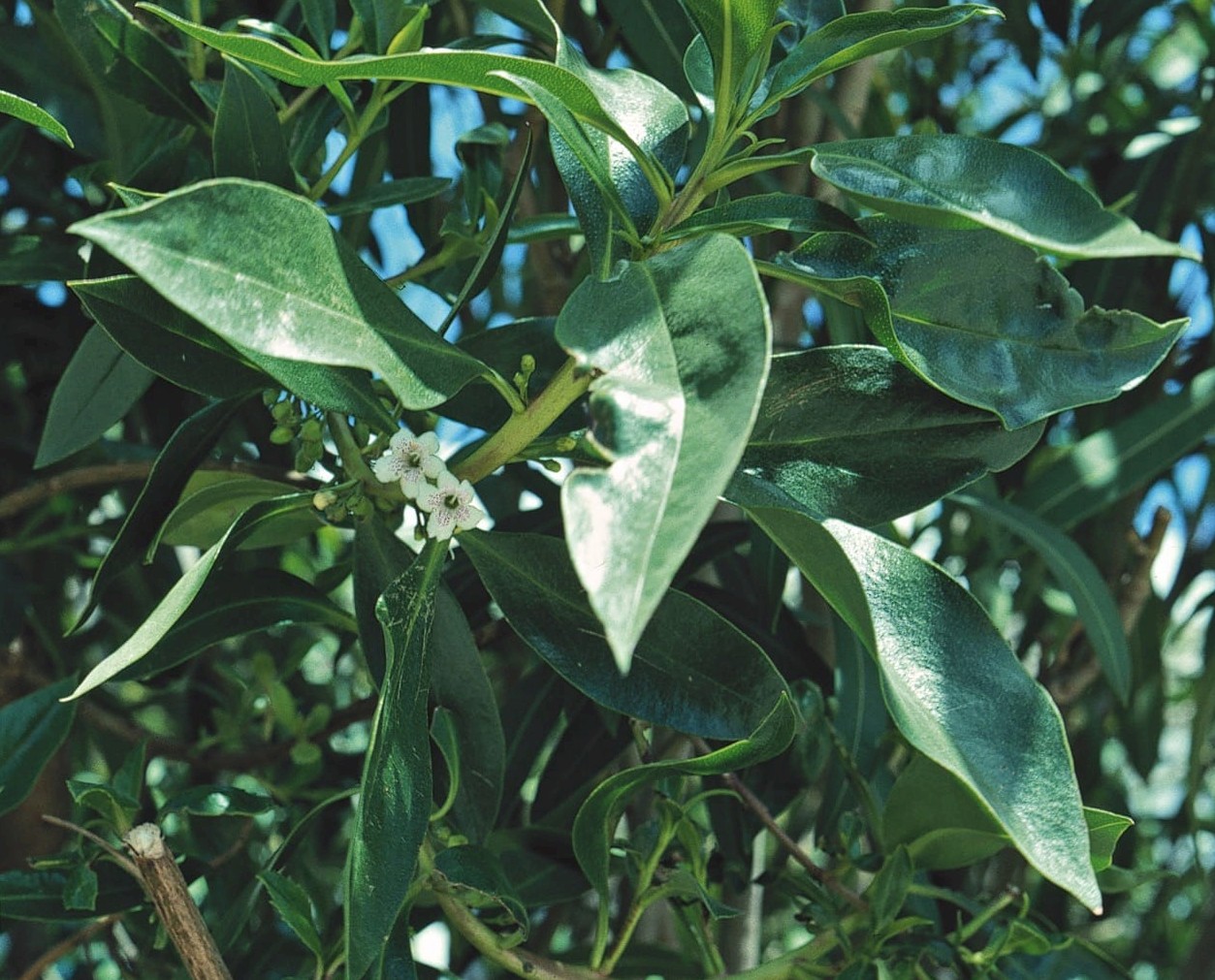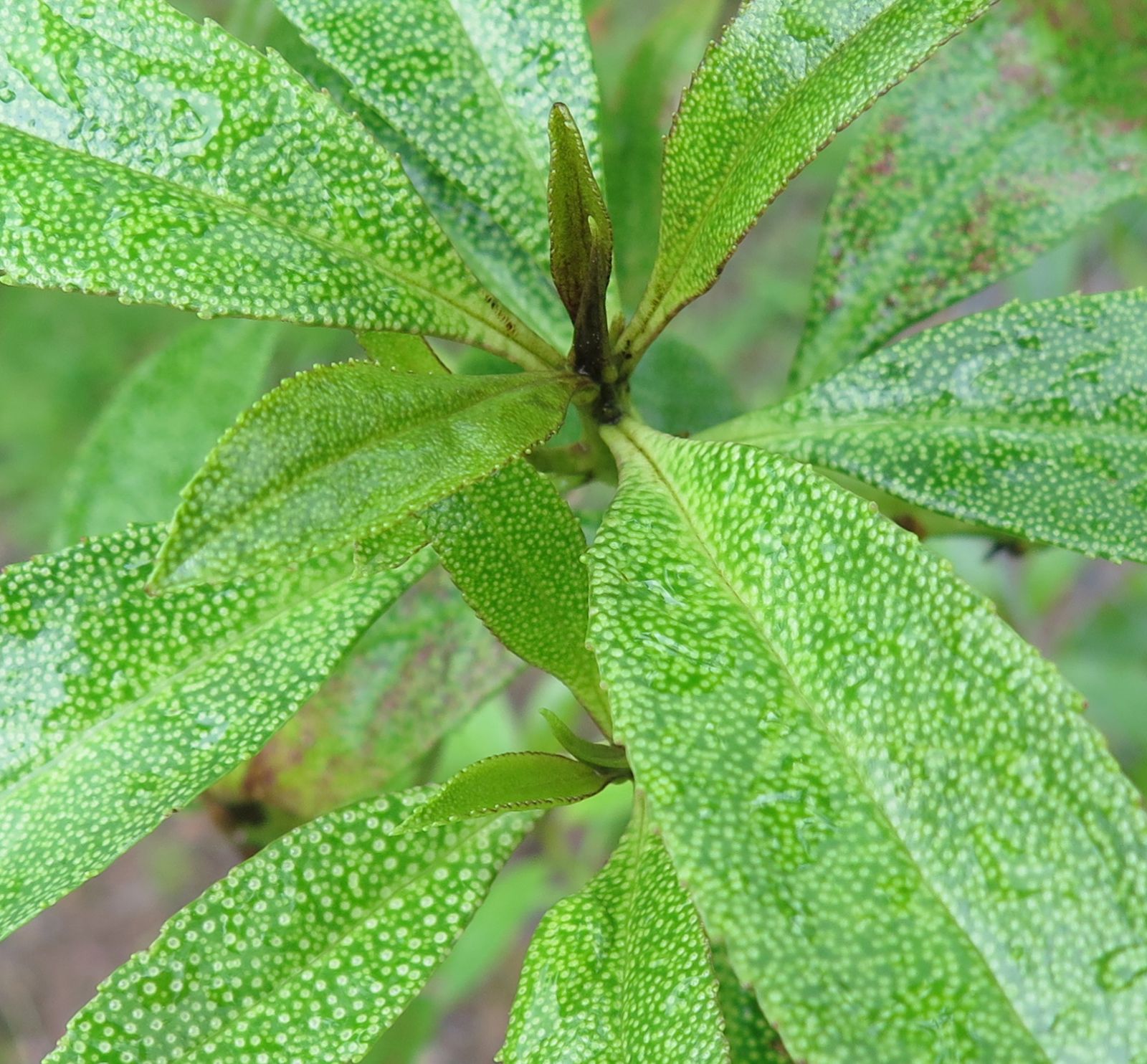Myoporum laetum
Credits
Article from New Trees by John Grimshaw & Ross Bayton
Recommended citation
'Myoporum laetum' from the website Trees and Shrubs Online (treesandshrubsonline.
Genus
Common Names
- New Zealand Manatoka
- Ngaio
Other taxa in genus
Shrub or tree 6–10 m, 0.5 m dbh; attractive, rounded tree with short spreading branches. Bark greyish brown, rough and corky. Immature branchlets and leaves green-bronze, sticky. Leaves somewhat fleshy, lush, 4–10 × 1–4.5 cm, narrow to broadly elliptic or obovate, covered with large conspicuous translucent glands, margins entire to serrulate, apex acute, mucronate or short-acuminate; petiole 0–1 cm long. Inflorescences axillary cymes with two to six flowers, located in the upper leaf axils; peduncles to 0.6 cm long. Flowers hermaphrodite, 1–1.5 cm diameter; calyx five-lobed, lobes lanceolate to ovate, corolla five-lobed, campanulate, petals white with purple spots, stamens four, attached to the corolla tube. Drupe broad oblong to ovoid, 0.5–1 cm long, pale purple to black. Salmon 1980, Sykes 1987. Distribution NEW ZEALAND: North Is. (coastal areas), South Is. (south to Otago). Habitat Coastal regions down to the high-tide line. USDA Hardiness Zone 9–10. Conservation status Not evaluated. Illustration NT523. Cross-reference K313.
Myoporum laetum is essentially a coastal plant, both as a native in New Zealand and in cultivation. It can be seen in seaside plantings around the Mediterranean, and in California where it has become invasive (cal-IPC 2006–2009). In such situations it is usually grown as a municipally pruned shrub, but it is potentially an attractive small tree forming a rounded crown with spreading branches, often with a gnarled and windswept look. The rounded leaves are a slightly yellowish mid-green, with the dull white, five-lobed flowers peering out from between them. It is currently doing well in Cornwall – there is a 5 m tree at Pine Lodge (Johnson 2007), and others elsewhere – and it could be tried along western coasts among seaward shelterbelts. In New Zealand young plants are considered to be a bit tender but when older it tolerates quite severe frosts (Metcalf 2000). It will grow best in good soil, but also copes with drier sites. Propagation is from seed or by cuttings.



